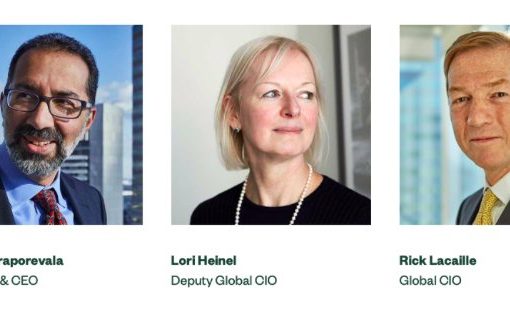As 2014 nears its finale, I expect the global economic outlook to strengthen slightly in 2015.
Despite a disappointing growth performance in 2014, the Eurozone managed to avoid slipping back into recession.
In 2015, I expect the Eurozone to continue being laggard among the developed countries with an annual growth rate falling short of 1%.

Monetary climate
The monetary policy of the ECB is likely to remain very accommodative and owing to weaker Euro, rising exports may increase the growth momentum in the months ahead.
In the US, economic growth is expected to remain on course in 2015. In my opinion, the trend growth rate is likely to hover around 3%. Inflation is likely to remain below 2% given the strength of the US dollar and the low oil price.
Although the Federal Reserve is expected to be an early mover in raising interest rates, given the low inflation and anemic wage growth, the expected rate increase which may come before the second quarter of 2015, is likely to be symbolic in magnitude.
Thus, I do not expect rates rising above 1% until the end of next year.
Jobs growth
The US labor market is gaining momentum. In my opinion, any negative effect of the sluggish growth in the Eurozone on the US economy will be limited.
The most important export destinations for the US companies are Canada and Mexico. Both of these countries are expected to grow strongly according to the IMF’s October forecasts (2.5% and 3.5% respectively).
Furthermore, falling oil prices and strong dollar increase the purchasing power of the US consumers. I expect retail and consumer discretionary stocks to benefit from falling unemployment and rising disposable income in 2015.
I foresee that a hard landing in China is unlikely given the monetary stimulus efforts of the nation’s central bank, People’s Bank of of China. The slowdown in the real estate market is expected to remain contained.
China play
The slow transition from investment and export-driven to a more consumption-led economy should benefit some blue-chip pharma and consumer-oriented sectors such as smart phones, clothing and apparel.
In my opinion, companies such as Michael Kors Holdings (KORS), which is in my Long Only Sector Rotation portfolio, is likely to benefit from rising middle-class consumerism.
I believe that equity markets should continue to outperform in 2015, despite increased volatility in a challenging environment. Strong corporate earnings observed in the last quarter support this hypothesis.
I believe that sluggish investment is the main problem for the US companies.
Cash-rich companies should start investing in machinery, equipment and software to be prepared for a significant increase in consumer demand rather than distributing higher dividends and/or engaging in share buybacks.
Tech trends
Technological advances may be conducive to increasing capital expenditure.
Companies with exposure to emerging technology themes such as the Internet of Things, cybersecurity, and 3D printing could possibly benefit from the revival of capital expenditure in my opinion.
The IT research firm Gartner estimates that 26 billion automated devices will be connected to the Internet by 2020.
Therefore, companies such as Qualcomm (QCOM), Intel (INTC), and General Electric (GE) are on my watch list for possible addition to our portfolio.
3D printers
Despite the poor performance of the 3D printer stocks in 2014, I continue to believe that this sector will benefit from higher capital spending in 2015.
3D Systems Corp. (DDD) and Stratasys (SSYS) are already part of our portfolio. As the implementation of technology gains momentum, I expect possible outperformance from these stocks.
I also put Hewlett Packard (HPQ) at our 3D watch list as a late comer to the market and I do not rule out adding the stock to our portfolio.
Another sector which may outperform in 2015, is the US health care. I particularly favor biotech companies to outperform in 2015.
Biotech
Biotech firms show generally resilience in volatile markets. Among the biotech companies, I prefer Amgen (AMGN) and Celgene (CELG), which are already in our portfolio.
Both companies, in my opinion, have a wide range of products and good product pipeline which may bode well for the future.
Amgen’s acquisition of the cancer drug producer Onyx Pharmaceuticals, as well as its wide range of lifestyle drugs (e.g. cholesterol), positions this company well for the future as populations age in the developed world.
CELG is another biotech company that has a diversified product portfolio and well-positioned for the future.
Energy holdings
The weak demand and increased supply of oil led to a dramatic fall in oil prices in the last quarter of 2014.
Exposure to energy stocks is low in my portfolio and I remain cautious about a bounce back with regard to the oil price momentum any time soon.
Some market analysts point out the negative correlation between the commodity prices and the USD and expect further decline in commodity prices due to further strengthening of the US dollar in 2015.
I do not subscribe to this point of view as the negative correlation between the USD and commodity prices is rather coincidental in my view.
In volatile markets, the demand for safe-haven assets such as US Treasuries increases and that causes the dollar appreciate.
Likewise, the expectation that Fed will raise the rates soon is conducive to appreciation of the USD in my opinion.
Looking forward, any causality between the USD and commodity prices should not be inferred.
With global recovery leading to higher demand for commodities, USD may still continue to appreciate.
In my opinion, when it comes to energy sector investments, oil refineries such as Tesoro (TSO), another portfolio holding, are better positioned under the current market conditions.
Photo credit: Caden Crawford via Flickr Creative Commons
DISCLAIMER: The investments discussed are held in client accounts as of November 30, 2014. These investments may or may not be currently held in client accounts. The reader should not assume that any investments identified were or will be profitable or that any investment recommendations or investment decisions we make in the future will be profitable. Past performance is no guarantee of future results.



